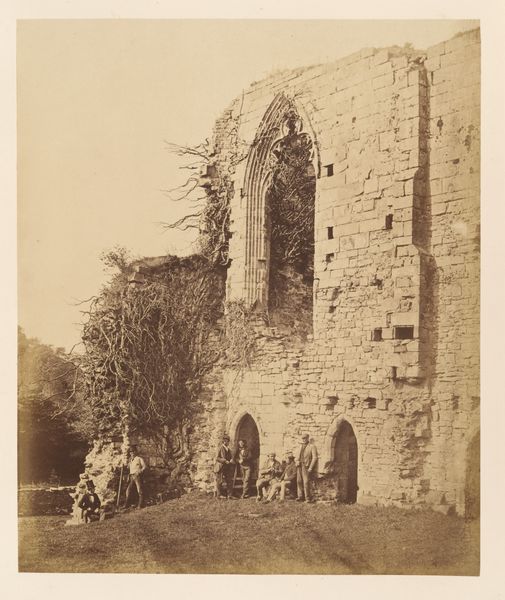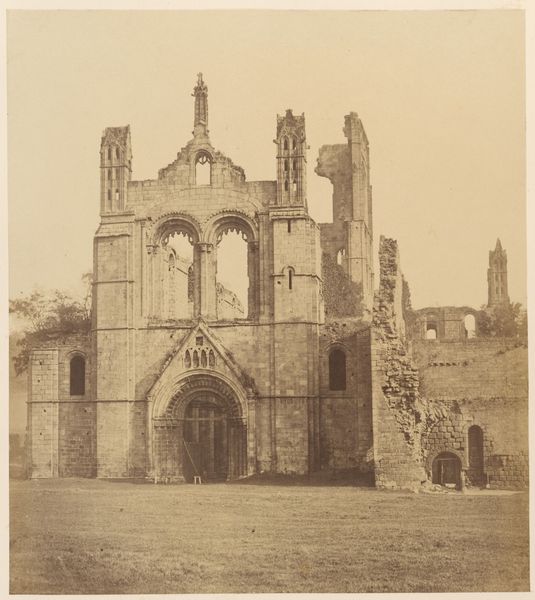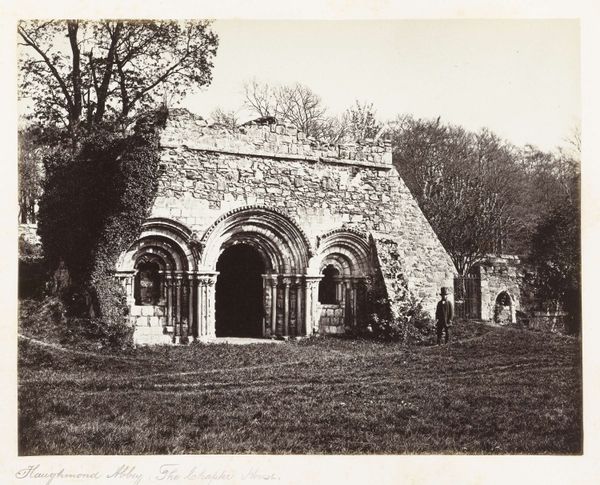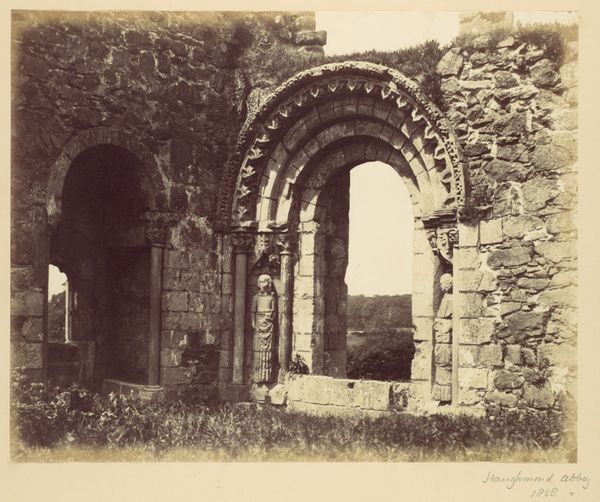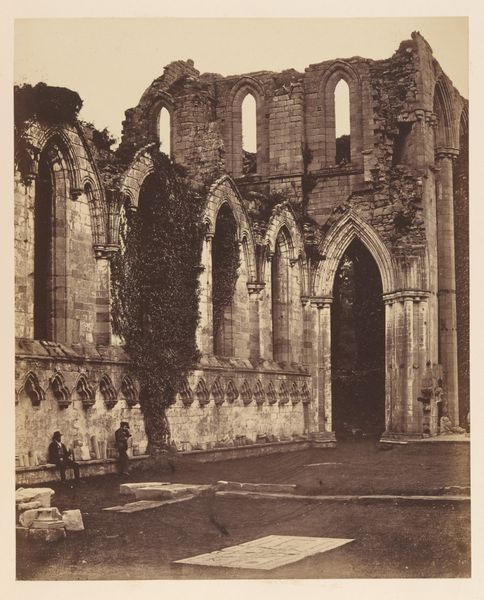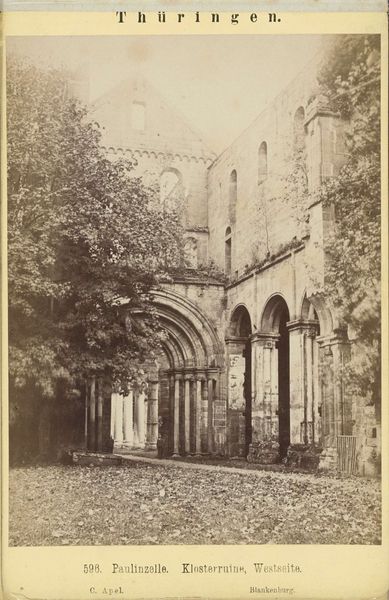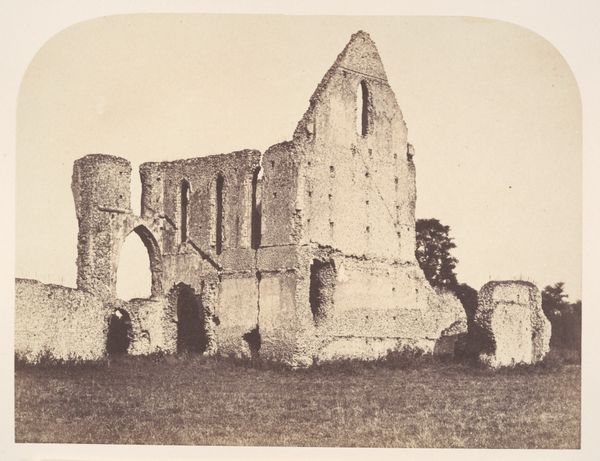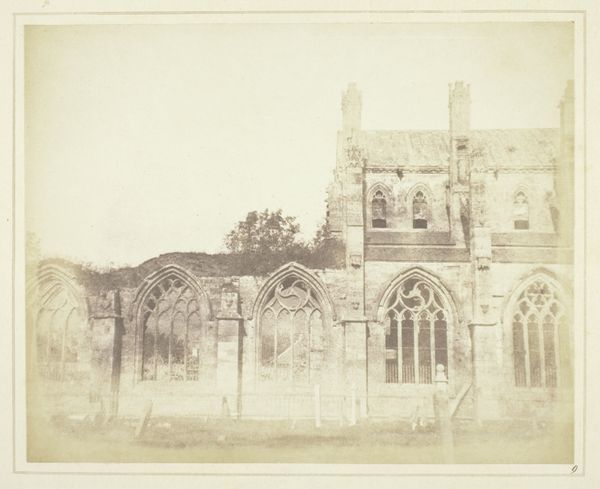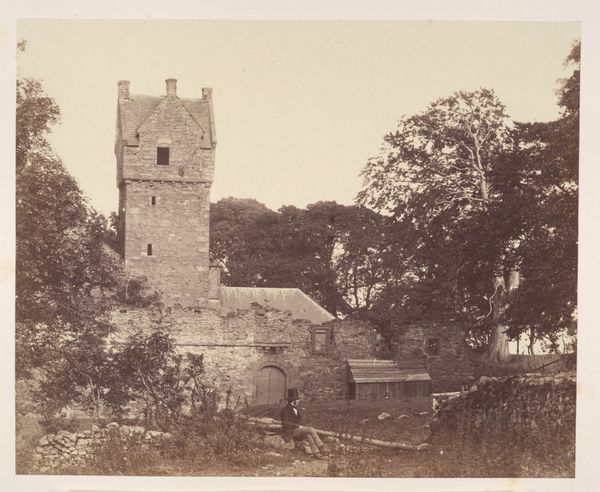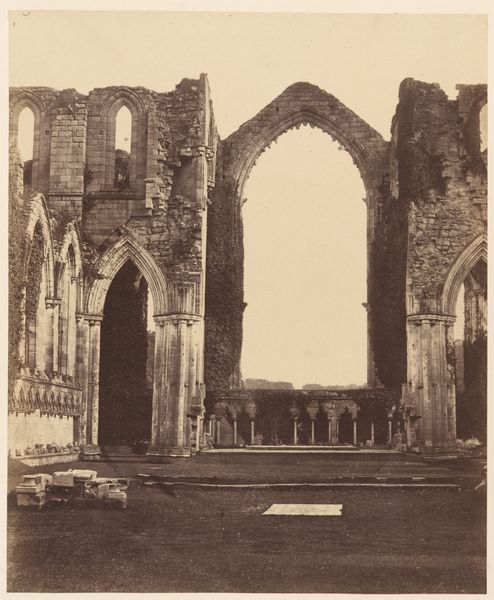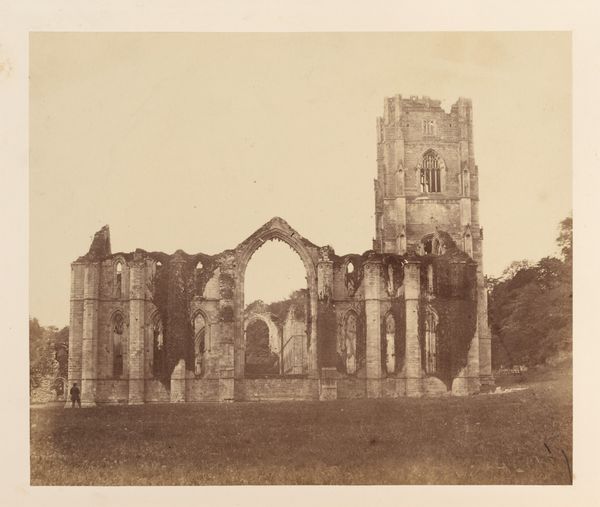
architecture
#
photo of handprinted image
#
toned paper
#
light pencil work
#
photo restoration
#
pencil sketch
#
old engraving style
#
etching
#
charcoal drawing
#
arch
#
watercolour illustration
#
watercolor
#
architecture
Dimensions: Image: 28 x 23.5 cm (11 x 9 1/4 in.) Mount: 43.9 x 30 cm (17 5/16 x 11 13/16 in.)
Copyright: Public Domain
Editor: Here we have Joseph Cundall’s "Easby Abbey. The Refectory," taken in the 1850s. It's a photograph, depicting the ruins of what I assume was once a grand building. The scene is steeped in an almost melancholy atmosphere, but also one of quiet resilience. How do you interpret this work through a contemporary lens? Curator: That melancholic atmosphere you pinpoint is critical. These ruins aren't simply decaying structures; they are physical testaments to power dynamics, shifts in religious landscapes, and the suppression of particular voices and communities. The dissolution of the monasteries under Henry VIII, for example, resulted in the dismantling of centers of learning, social support, and, crucially, alternative power structures that challenged the Crown. What do you see when you consider these power structures? Editor: I hadn't really considered that. Looking at the photograph now, the figures in the foreground seem to emphasize that loss. Almost as if the workers are stripping it down... Curator: Exactly. Think about whose stories are being told, and whose are absent. Who benefited from the Abbey's destruction? Who lost? Cundall’s composition, capturing a site in ruin, forces us to consider the very act of photographic representation. The very medium is deployed to document both physical change, but, I would argue, as a space that amplifies questions related to socio-political violence and those impacted by the same. Can we interpret the scene in its material condition as a site of resilience? Editor: I think I am beginning to see the photograph as more than just a historical document. Curator: It is precisely by confronting these uncomfortable histories that we, as viewers today, engage in critical dialogue and, ideally, activate an intersectional form of knowledge production that fosters an ethos of understanding. Editor: Thank you. That adds so much depth to my understanding of what this image is communicating! Curator: Indeed. Art, like history, is never neutral. It always serves an agenda, conscious or not. What is most important is that we, as critical agents, consider such nuance as a pathway for truth seeking.
Comments
No comments
Be the first to comment and join the conversation on the ultimate creative platform.
